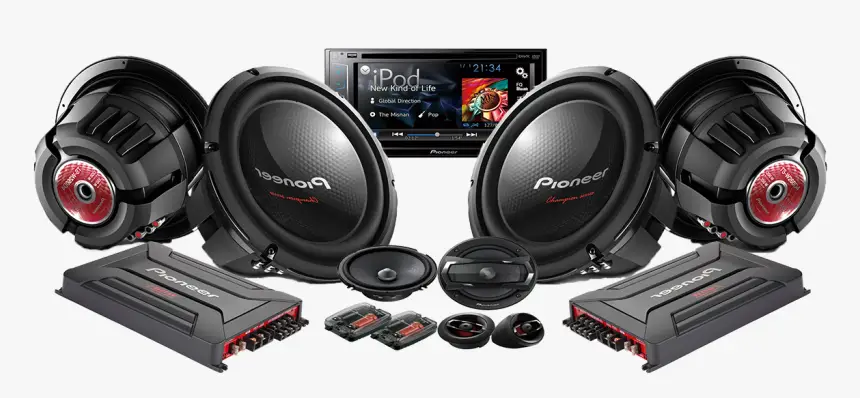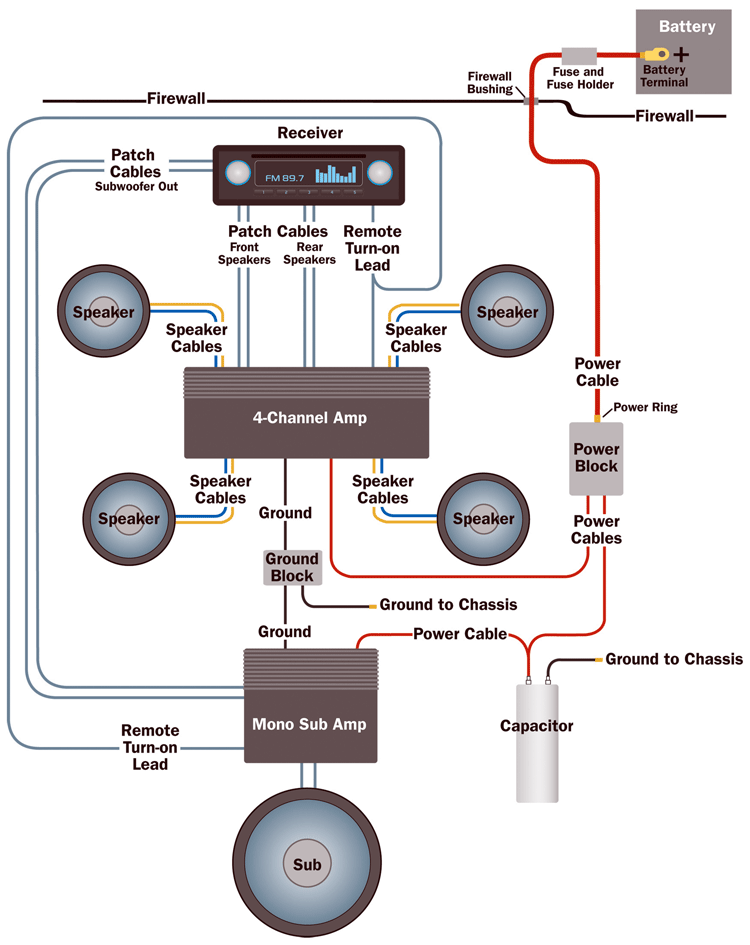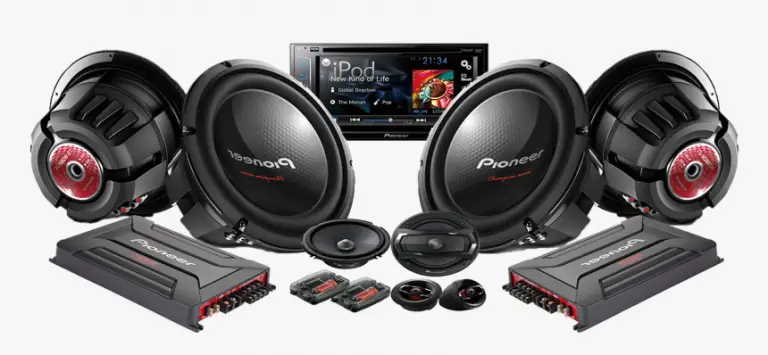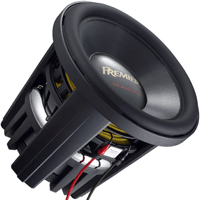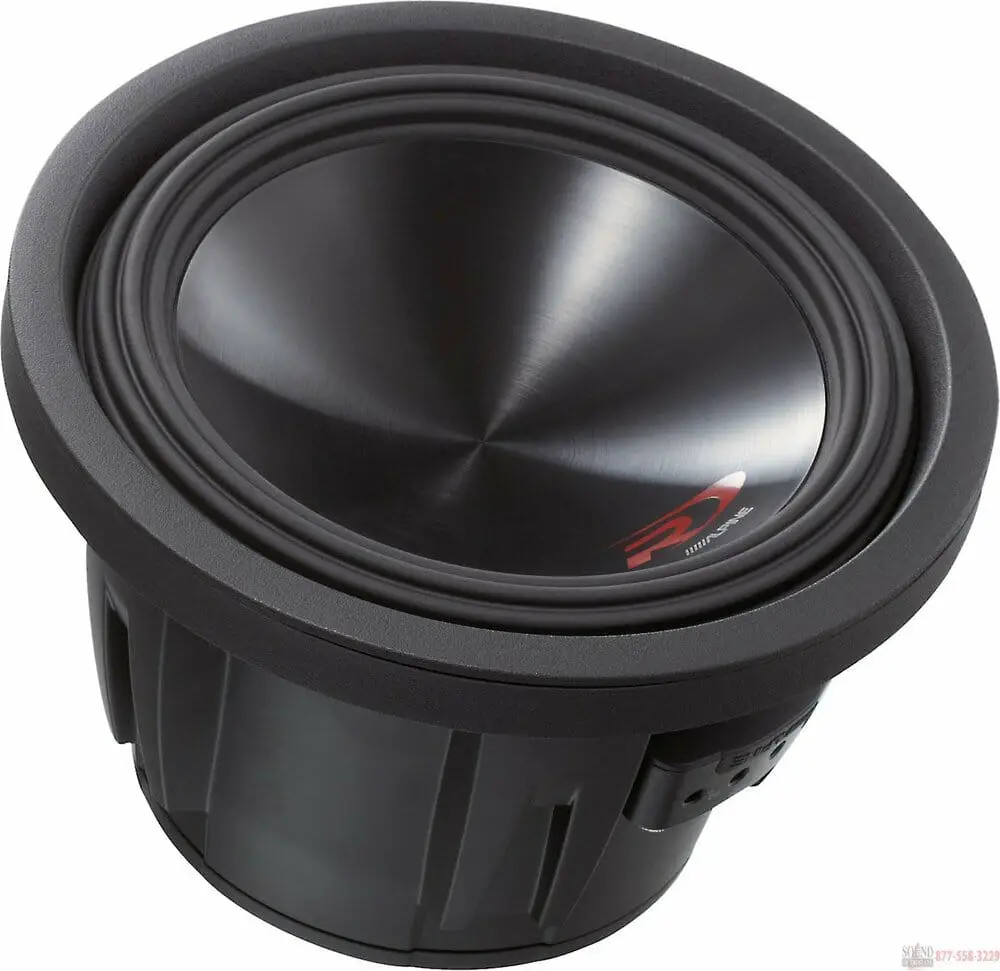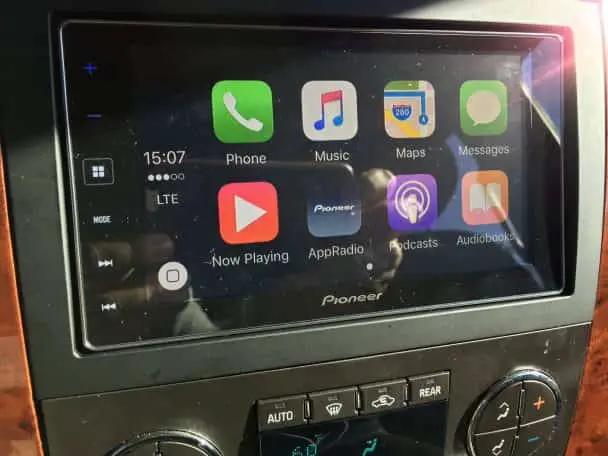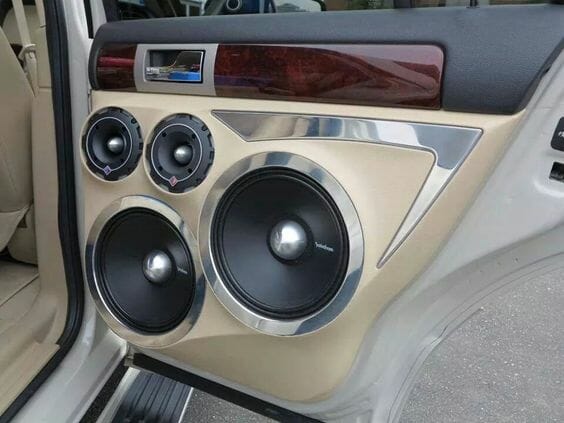Congratulations, fellas: you’ve taken your first step into a larger world. Having a car audio system that fully satisfies your needs and wants is impressive, as I can attest, but I can certainly admit it can be a bit of a daunting endeavor to figure out where and what to start with. There are about one million things to learn about mobile audio systems in the first level, not to mention equipment and tools you seemingly need to buy; all of them claim to be the best on the market, leaving most people even more confused. Believe us.
We’ve been there; we’ve done that.
Let me reassure you that you’re not alone in this dilemma; that happens to everyone. However, once you get past all the worrying and eye-rolling gross stuff that goes into car audio systems, it comes time to breathe a new life into your music by building your car audio system according to your needs. Thankfully, you’ll get a lot of advice and instructions on the Internet; here is our attempt to do the same.
We’ll help you enjoy hearing your system getting better and better with each new step in the process. Hopefully, by the time you’re done, you’ll have a better understanding of what to do next to take your listening experience to the next level.
Some people look at car audio system building projects as an “all or nothing” proposition. Obviously, it can be a challenging project as there are several key factors you need to consider before parting with your hard-earned money. People usually make a wish list, develop what to upgrade, look at the total cost, get nervous and drop the project. It doesn’t have to be that way for you, though. If you don’t have the budget to accommodate such a project, don’t worry, you can still do it, but in stages. That’s affordable and a lot easier on your wallet. So, let’s get started.
>> Get your car audio system package by clicking here! <<
Stage 1 – Beautiful Beginnings
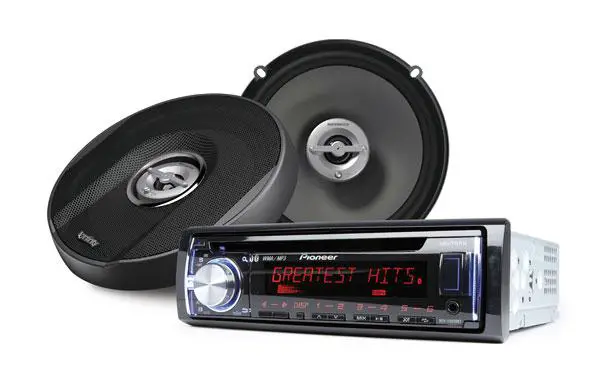
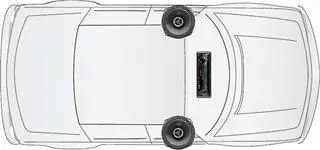
Step 1 : Pick Your Speakers
First, you have to pick your speakers – this is the cornerstone of your entire audio system. This is the part that all the other sound equipment is basically there to support. There are a lot of different models out there for you to choose from, so take your time and do some research to find the best ones for your vehicle – some good brands are Pioneer, Infinity, JBL, Polk Audio, and even some cheaper Pyle’s can be thrown into the mix as well.
You want the first step to be a real difference-maker, so to pick the right speakers for you, keep researching and reading up on reviews – decide whether or not you want coaxial speakers (also known as full-range speakers) or components, 6.5 in size or 6 x 9 (it depends on your vehicle’s make and model & mounting location), front car door or rear deck speakers (usually 6.5 speakers for the front, and 6×9 for the rear), and more. This is the hard part of the process, so find the best balance between performance, price, clarity, sharpness, and depth of the sounds, and you’ll be good to go.
Important Things to look for in-car speakers
- Power Handling especially RMS
- Build Materials
- Impedance
- Sensitivity
- Frequency Range
Step 2: Pick Your Receiver
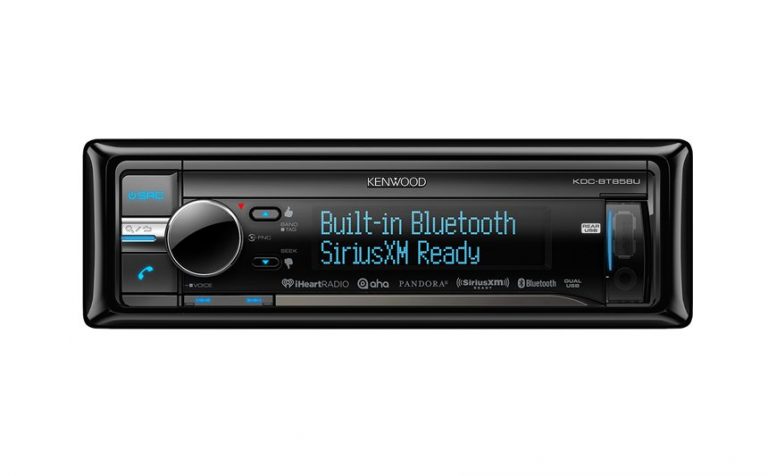
Once you’ve got your speakers picked, it’s time for you to pick a new head unit. There are various types of aftermarket head units out there; double din head units, single din head units, digital media receivers (Mech-Less). These receivers come with a wide array of features and functionalities, with Bluetooth connectivity being one of the most important and the most wanted features.
A head unit is usually a major candidate for upgrading simply because it sits at the core of every car audio system, and it’s the single most visually arresting component that people usually pay attention to. A visually appealing head unit with a large touchscreen will enrich your car’s dashboard, making your car looks as good as it sounds. On the other hand, your head unit also serves as the interface for your sound system, so usability is also an important factor.
Here are some features to look for when you’re shopping for a new car receiver :
- AUX & USB Inputs
- Preamp Outputs
- Bluetooth Compatible
- Satellite Radio Ready
- HD Radio & Pandora Internet radio
- Steering Wheel Control Compatiblilty
- Remote control
- MIXTRAX & customizable display
Stage 2: Higher highs, lower lows
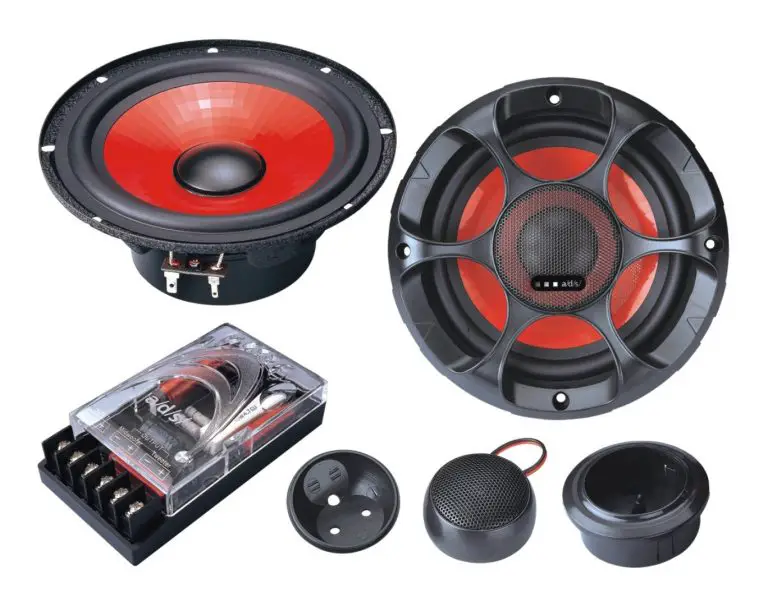
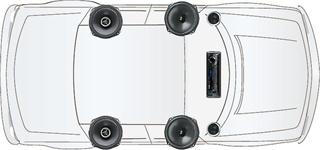
Step 3: Pick a Set of Component Speakers
Component speakers (also known as separates) separate tweeters, crossovers, and tweeters, which results in an outstanding sound-imaging and more realism added to your tunes.
Component speakers can be a huge difference-maker in terms of sound quality. We recommend that you move the full-range speakers from the first step to the rear deck, then swap in these new component speakers upfront.
The only thing I can imagine could be a problem with component speakers is their installation process, which tends to be a bit more complicated than their counterparts (full-range speakers).
Stage 3: Pick a Multiple Channel Amplifier
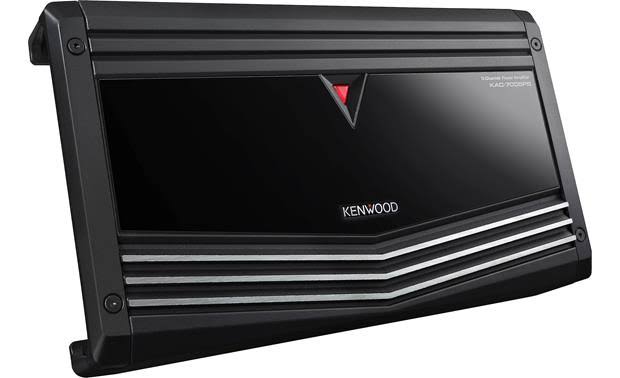
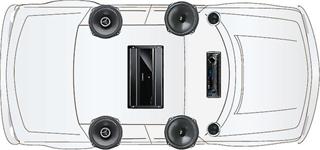
It’s a matter of the fact that even aftermarket head units aren’t powerful enough to drive your whole sound system. For this reason, you’ll need an external amplifier. We recommend going for multiple channel amps because they give you more flexibility to add new components down the road.
Additionally, if you want to skip stage 2, you can use two of the amp’s channels to power your front-mounted speakers while bridging the output of the other two channels to power a subwoofer. And that’s not the only option available. As you can see, multiple channels are very flexible.
5 channel amps let you power your entire audio system, including a subwoofer. They have four channels that are mainly used for powering both front and rear speakers and a fifth channel dedicated to powering an external subwoofer. These amplifiers are a good investment when you’re building your sound system in stages which is the case here.
Stage 4: Pick a powerful Subwoofer
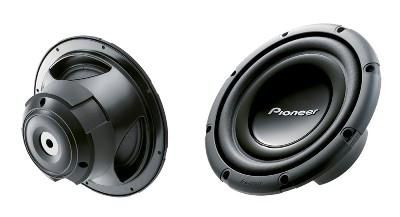
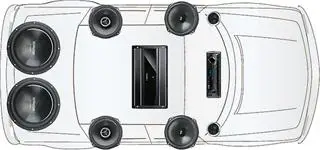
Drop a subwoofer into the mix and enjoy the bass your music has been missing. If you’ve chosen a 4-amplifier, then you’ll need a dedicated mono channel amp to drive your subwoofer(s). Otherwise, if you’ve chosen a 5-channel amp, then you can use the fifth channel to drive your subs.
Either way, If you want a professional, robust installation, we highly recommend that you buy a mono channel amp to power your subs.
There are various ranges of subwoofers out there. I want an easy-of-the-shelf subwoofer, and space isn’t an issue in your case, then a 12-Inch sub enclosure is your best shot.
Things you need to be aware of when shopping for a new car subwoofer :
- Type
- RMS Power handling
- Sensitivity Rating
- Impedance Load
- Frequency Range
- Size
Stage 5: More power
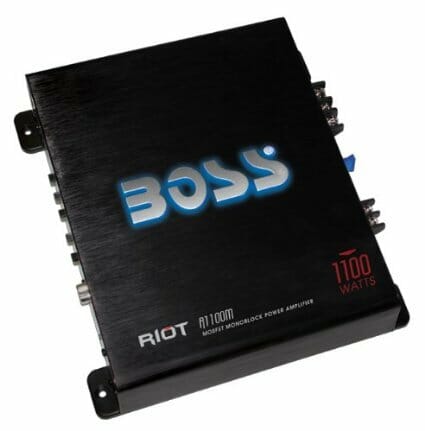
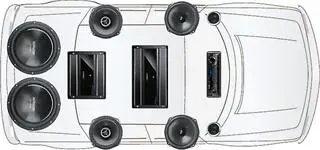
Powerful subwoofers are always starving for more power. For this reason, some serious audiophiles think that bridging two channels out of 4 channels to drive a subwoofer is a good short-term solution. And if you want to take full advantage of your subs, then you’ll need to use a completely dedicated mono channel amplifier that gives the subs the needed juice. This boils down to a simple formula, big bass = more power.
Finally, If you’ve followed all these steps, you should have something similar to the screenshot below and then, eventually, a robust sound system that will revitalize your music.

